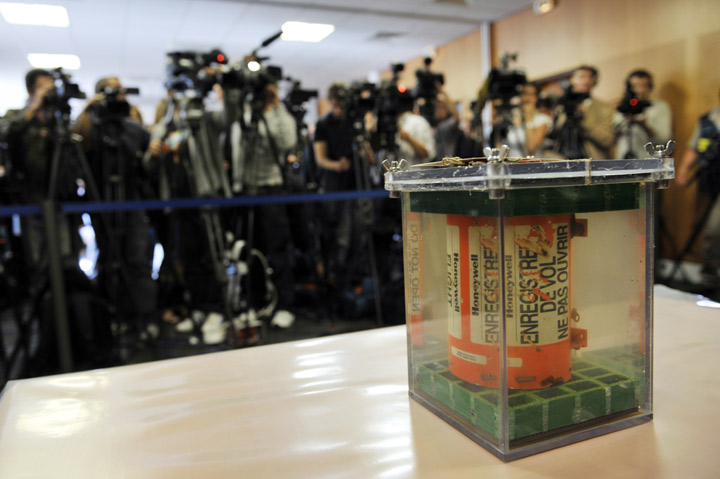TORONTO – In the months following the disappearance of Malaysian Airlines Flight MH370, aviation experts have reopened the debate surrounding the live-streaming of black box data.

But Canadian airline First Air will soon become one of the few in the world to have the option to live stream black box data in the event of an emergency – and the technology they are using is all Canadian made.
“Everybody talks about the black box on an airplane, but it is permanently installed on an airplane and if the airplane goes missing so does the black box,” said Vic Charlebois, vice president of Flight Operations.
“What this technology allows us to do is if the aircraft gets into difficulty the Automated Flight Information Reporting System (AFIRS) will look back 20 seconds from where the event occurred and pick up the data from the airplane – the same data that is being stored in the black box – and start streaming it to a secure server.”
READ MORE: How live-streaming black box data could prevent another Flight MH370 disaster
The technology dubbed “FLYHTStream,” made by Calgary-based FLYHT Aerospace Solutions, allows those on the ground to have instant access to the flight data and cockpit audio recorder in the event of an emergency – whether it be system failures, or some catastrophe, like a crash.
FLYHTStream can be activated in multiple ways.
The pilot can activate it by pressing a button located in the cockpit, or the software can be pre-programmed to automatically switch on during certain events, such as a depressurization or engine failure.
Live-streaming can also be activated from the ground.
“If one of the dispatchers happened to see something unusual going on with the aircraft they could push a button and it would start streaming the data to the ground,” said Charlebois.
“Let’s take the case of the Malaysian aircraft – if it was being monitored through satellites and a dispatcher did see it wander off course somewhere, the procedure would be to activate the Flight Stream and then contact the crew to see what was going on.”
System costs roughly $100,000 per aircraft
The process started over two years ago when First Air, which operates in remote towns in Canada’s northern regions, partnered with FLYHT to install the company’s Automated Flight Information Reporting System (AFIRS) system in their fleet.
Due to the lack of infrastructure in Arctic regions, First Air needed to invest in a system that would give them better communication with their pilots, especially when dealing with the ever-changing weather conditions in the north.
The AFIRS box, installed in about 20 planes for roughly $100,000 each, provides voice data and text services, along with satellite and Internet-based systems to track aircraft.
READ MORE: What is a black box and how does it work?
FLYHTStream is currently not operational in First Air’s aircraft, though the company is already using the AFIRS system for flight monitoring. Charlebois said the company is essentially awaiting a software upgrade that would allow FLYHTStream to work if needed.
“The initial up-front cost was for the boxes to be put in,” he said. “This is just a natural progression of using the capabilities of the system that we have.”
They hope to begin testing the system by the end of May.
Many advantages to the technology
Though Charlebois said moving to FLYHTStream was a natural progression for the company, he added that the system will allow them to be better prepared in an emergency.
“We’re up in the high Arctic, so if an aircraft were to go missing you won’t be able to find it quickly,” he said.
Live-streaming flight data will also allow teams to create specialized animations recreating what happened in flight.
This practice is often used in air crash investigations to discover what actions the plane took mid-air; however, crews normally have to wait until the planes black boxes are found and that can take years if the plane went down in an Ocean.
The technology helps airlines save money by monitoring how the plane is flying – and in what conditions – to help with fuel economy.




Comments